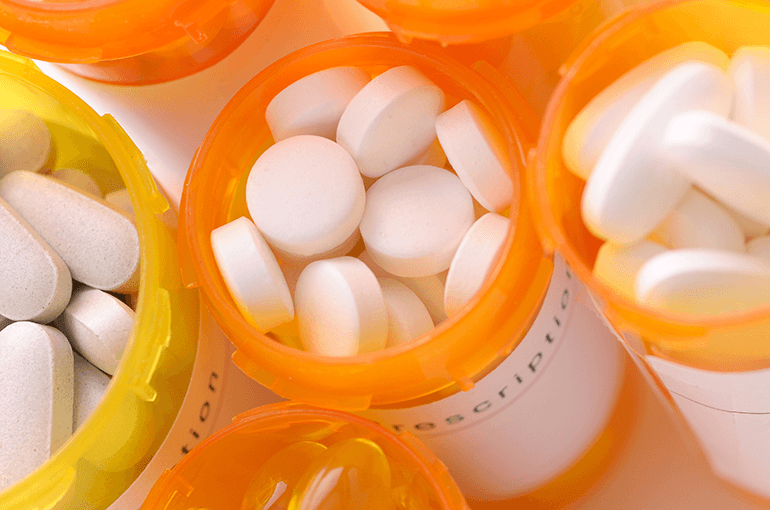Atherosclerosis is a common condition that can affect anyone, particularly if you’re over 65 or have a family history of heart or circulatory diseases.
A build-up of atheroma in the walls of your arteries causes them to harden and narrow until blood cannot pass properly. Many people do not know they have atherosclerosis since atheroma takes time to build up and often does not cause symptoms until it affects blood flow.
Lifestyle, family history, and conditions such as high blood pressure, high cholesterol, and diabetes all affect whether you’ll get atherosclerosis. Atherosclerosis is not reversible, but you can manage it with medicines and treatments which can slow down its progress.
Atherosclerosis vs arteriosclerosis
Atherosclerosis is not the same as arteriosclerosis. Arteriosclerosis is a general term used to describe the hardening of arteries which reduces blood flow to parts of the body where the hardening occurs. Atherosclerosis is a form of arteriosclerosis, but they do not mean the same thing.
Symptoms of atherosclerosis
Most people with atherosclerosis do not know they have it because most of the symptoms do not show up until one of your arteries is severely narrowed or blocked. Symptoms usually depend on the arteries that are affected and the most common include:
- chest pain (or angina)
- feeling confused, as a result of limited blood flow to your brain
- difficulty breathing
- feeling very tired (fatigued)
- pain in any of your limbs, where there may be a blocked artery
- weak muscles.
If you have any of these symptoms or think you may have atherosclerosis, please contact your GP.
Risk factors of atherosclerosis
Since there is no specific reason why arteries become narrowed or blocked by atheroma, anyone is at risk of getting atherosclerosis. However, there are some factors that can increase your chances of getting it, such as:
- a family history of atherosclerosis or other heart problems
- living with excess weight or obesity
- conditions like high cholesterol, diabetes or high blood pressure (which increase your risk of having heart and circulatory diseases)
- drinking too much alcohol (more than the recommend weekly amount of 14 units)
- ethnicity. Research has shown that people of some ethnicities (Black Africans, African Caribbeans and South Asians) in the UK are at higher risk of developing high blood pressure or type 2 diabetes. Both of these conditions increase your risk of having cardiovascular diseases
- getting older, especially if you're over 65
- not exercising enough
- smoking and using other tobacco products
- unhealthy diet.
Atherosclerosis diagnosis
To find out if you have atherosclerosis, your doctor will ask questions about your lifestyle, family history and may send you for tests. If you can, find out if you have a family history of atherosclerosis or heart disease so your doctor gets a full picture. The tests may include:
- blood tests
- CT scan
- angiogram
- ECG
- exercise ECG
- coronary calcium scoring. A scan of the heart to see how much plaque has built up in the arteries of your heart
- carotid ultrasound. A test that makes pictures of the insides of the two largest arteries in your neck (called the carotid arteries).
Most tests are painless. Get prepared and feel better about the tests for atherosclerosis and other conditions by reading about tests.
Atherosclerosis treatment
If you’re diagnosed with atherosclerosis, there is no cure. However, you can manage it with medicines and treatments which can slow down its progress, reduce your symptoms and let you live your normal life.
Your doctor will tell you about what treatment you will need or any lifestyle changes you might need to make, which may include:
- Surgery. If the arteries that supply your heart muscle with blood and oxygen are seriously narrowed or blocked,
coronary bypass surgery or a coronary angioplasty may have to be done to improve the blood supply.
- Changes to your lifestyle like exercising, not smoking and drinking less alcohol to reduce symptoms.
- Changes to your diet like eating 5 portions of fruit and vegetables a day, eating more whole foods instead of ultra processed foods, and choosing leaner cuts of meats.
- Medicines to reduce high cholesterol, high blood pressure or the risk of blood clots.
How do I prevent atherosclerosis?
Making positive changes to your lifestyle is one of the best ways of both preventing and improving the symptoms of atherosclerosis. The things that reduce your risk of developing atherosclerosis are the same as for other types of heart and circulatory diseases, like:
- Eating healthier foods. Use our recipe finder for tasty and heart healthy ideas.
- Keeping active which improves your heart health, boosts your energy levels, and helps you sleep better.
- Keeping to a healthy weight. This will help your overall health and prevent extra strain on your heart.
- Limiting how much alcohol you drink (less than the recommended 14 units per week).
- Avoiding smoking and using other tobacco products.
- Taking medicines prescribed by your doctor to help issues like high blood pressure, high cholesterol and diabetes.
Heart Helpline and other support
- Speak to our cardiac nurses by phone, callback, email or online chat on Heart Helpline (Monday to Friday, 9am to 5pm).
- Sign up to our Heart Matters magazine for online information packed with health and lifestyle advice.



